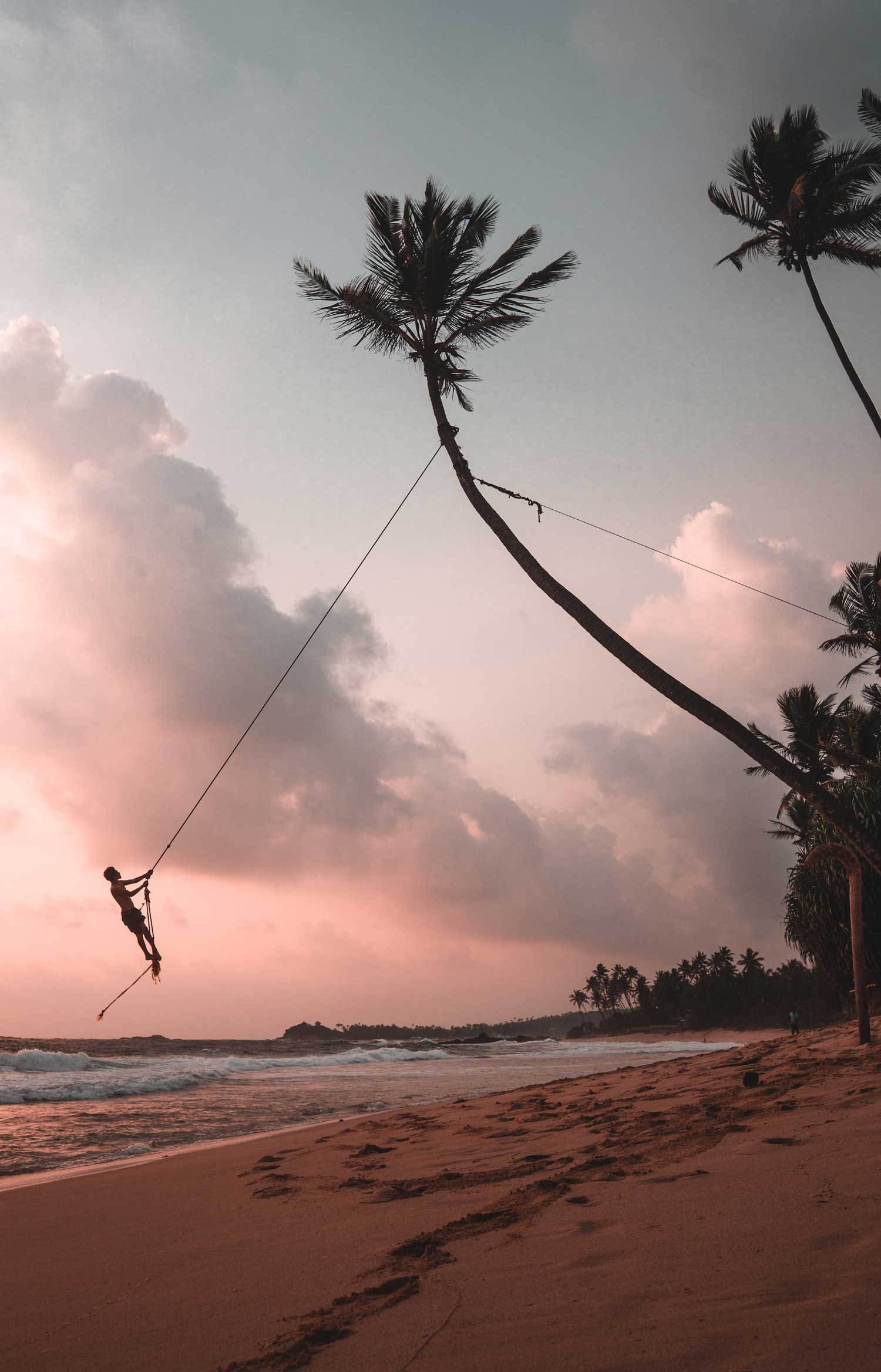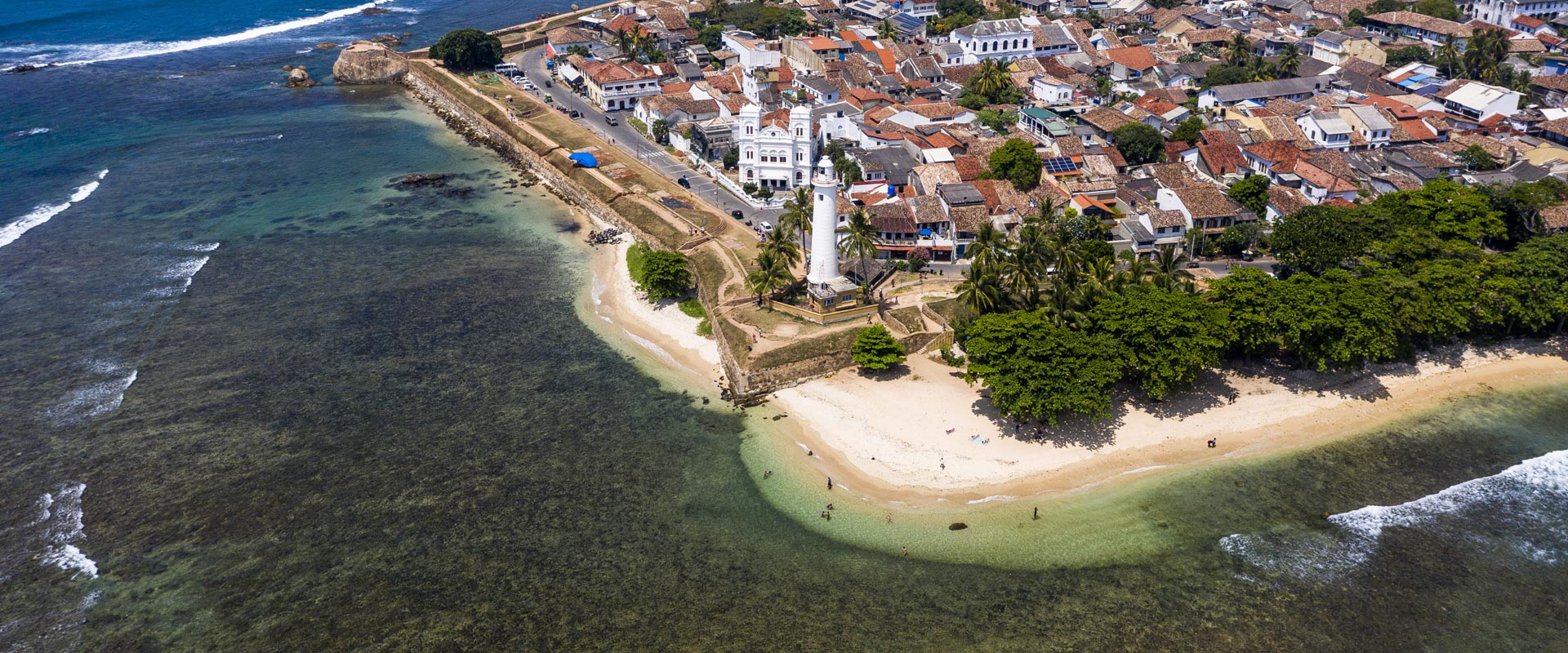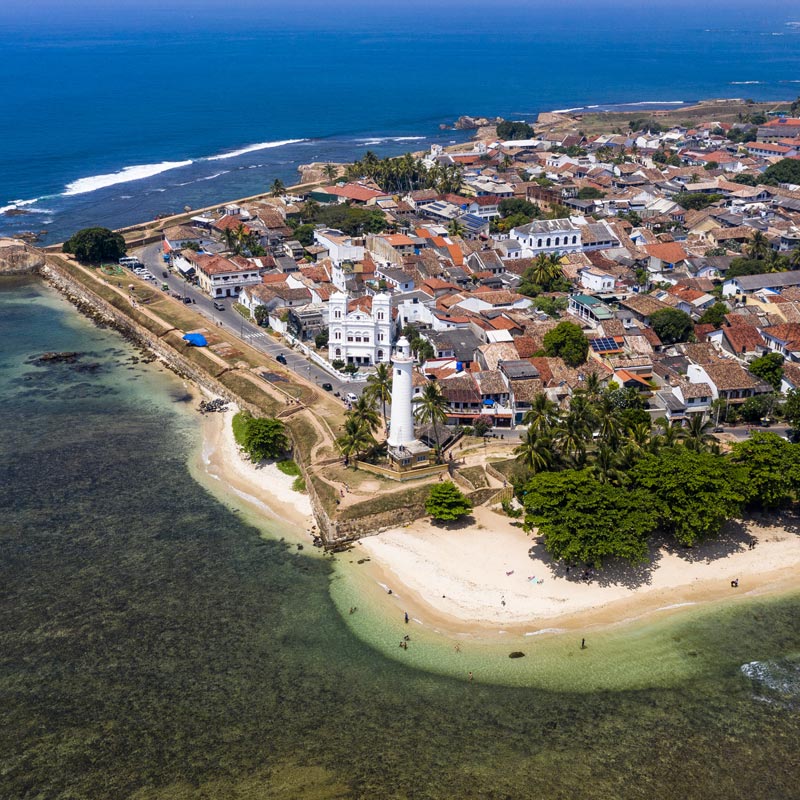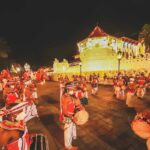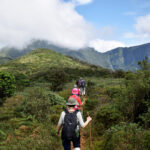Top Ten Reasons to Visit the Sri Lankan City Galle
Galle, a coastal city situated in the southwestern tip of Sri Lanka and the provincial Capital of the Southern Province as well as the capital of the Galle District.
Galle
The city of Galle is located on the coast at the extreme southwest corner of the island, 113km away from Colombo, where the shoreline turns east towards Matara and Tangalle. This fortified old city was founded by the Portugese colonists in the 16th century and was later expanded by the Dutch with the stone sea walls. The encircled car-free streets have architecture reflecting Portugese, Dutch and British rule.
The important natural geographical features in Galle include Rumassala in Unawatuna, a large mound-like hill that forms the eastern protective barrier to Galle Harbour. According to local legend, this hill is associated with some events of Ramayanaya, one of the great Hindu epics.
Galle boasts of a tropical rainforest climate and doesn’t have a distinctive dry season, though it is noticeably drier in January and February though the temperature shows very little variation throughout the year. The city was one of the worst affected cities when devastation struck and resulted in the loss of thousands of lives when the Tsunami affected the coastal region of Sri Lanka in 2004. Since then, however, the city has been rebuilt to its glory.
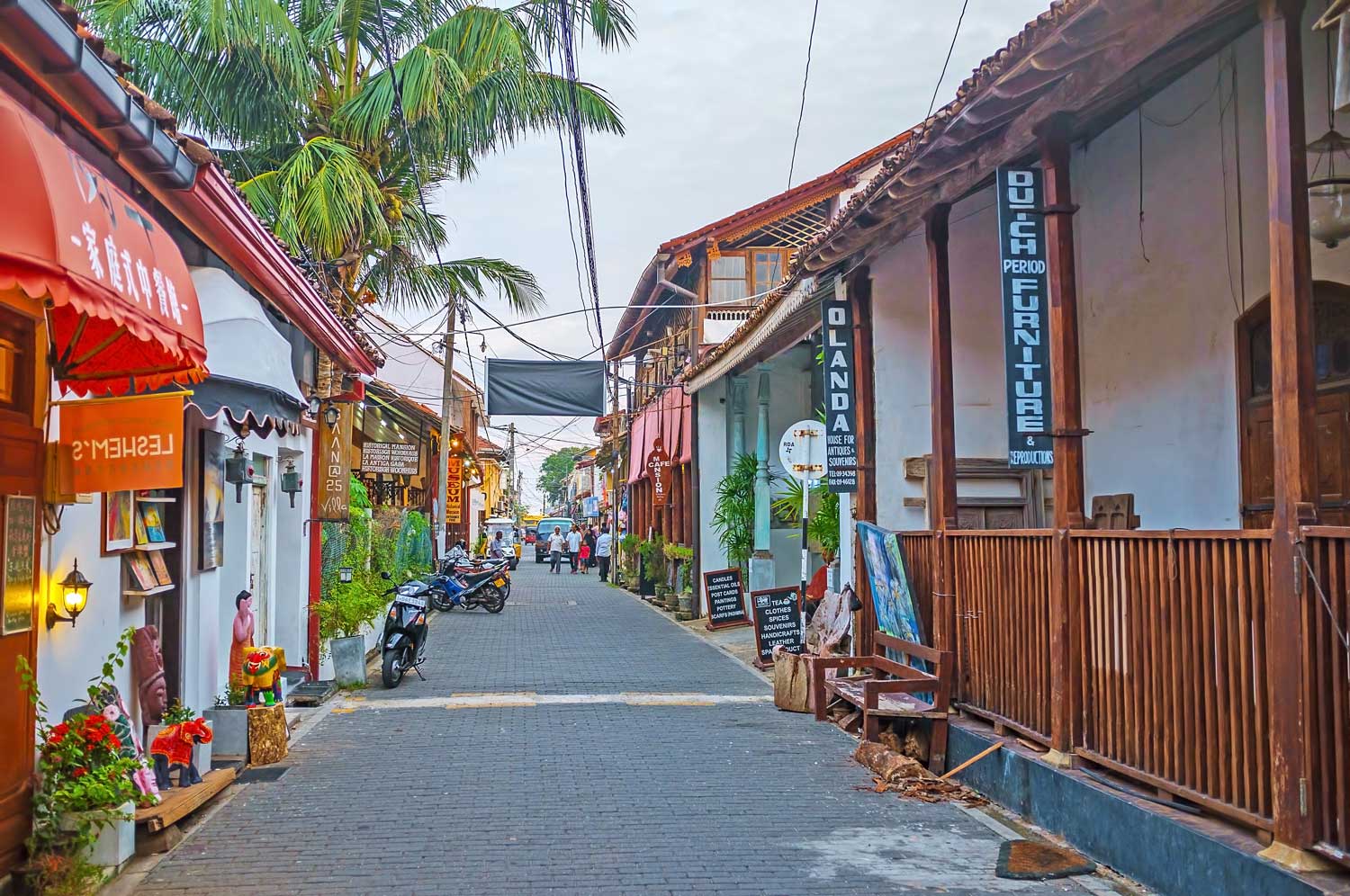
Galle Fort
Built on a small rocky peninsula, belonging to the sea as much as to the land, the Galle Fort is also known as the Dutch Fort or the “Ramparts of Galle”. It is a historical, archaeological and architectural heritage monument, which undergoes extensive reconstruction work by Archaeological Department of Sri Lanka. This is how it maintains a polished appearance, even though it’s over 400 years old.
Some of the main archeological and Architectural heritage monuments of Gall Fort include the Lighthouse, clock tower, the All Saints’ Church, National Museum, Old Dutch Hospital and the National Maritime Museum.
In addition to its colourful history, Galle has a multi-ethnic and multi-religious population. Properties within the fort are owned by Dutch nationals and the Sri Lankas government and they’re looking at making Galle one of the modern wonders of the world.
Upon recognizing its heritage value, the Galle Dutch fort has been inscribed as a Cultural heritage UNESCO world Heritage site for its unique combination of European architecture and South Asian traditions
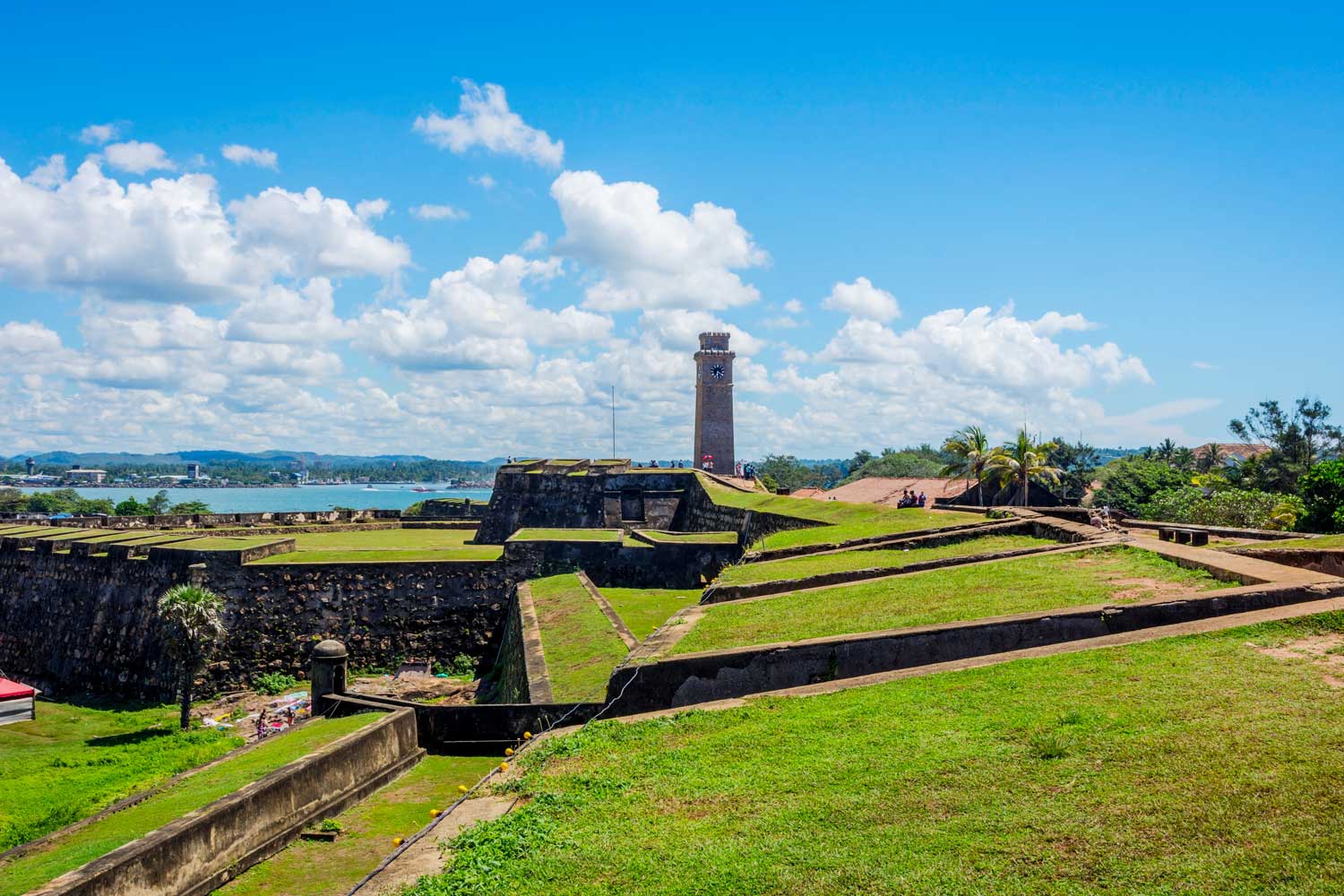
Jungle Beach and Rumassala
Enhanded by its Golden sandy shore and rich bio diversity backgrounds, the Jungle Beach is suitable for swimming without waves. Located about 7.5km from the man city of Galle, the approach to the Jungle beach is up the Rumassala mountain and a trek down through the greenery through a small route that leads to the beach. This secluded beach is rich with coral reefs and marine biology therefore there is great potential for snorkeling.
Rumassala is best known by Naturalists and famous among Tourists because the jungle beach is brimming with a variety of uncommon birds, animals and plants, especially some rare medicinal plants.
According to Ramayana legend, the Rumassala Rock is part of the Himalayan range that was brought by “Hanuman” to heal the wounded battalions in order to obey the request of King Rama.
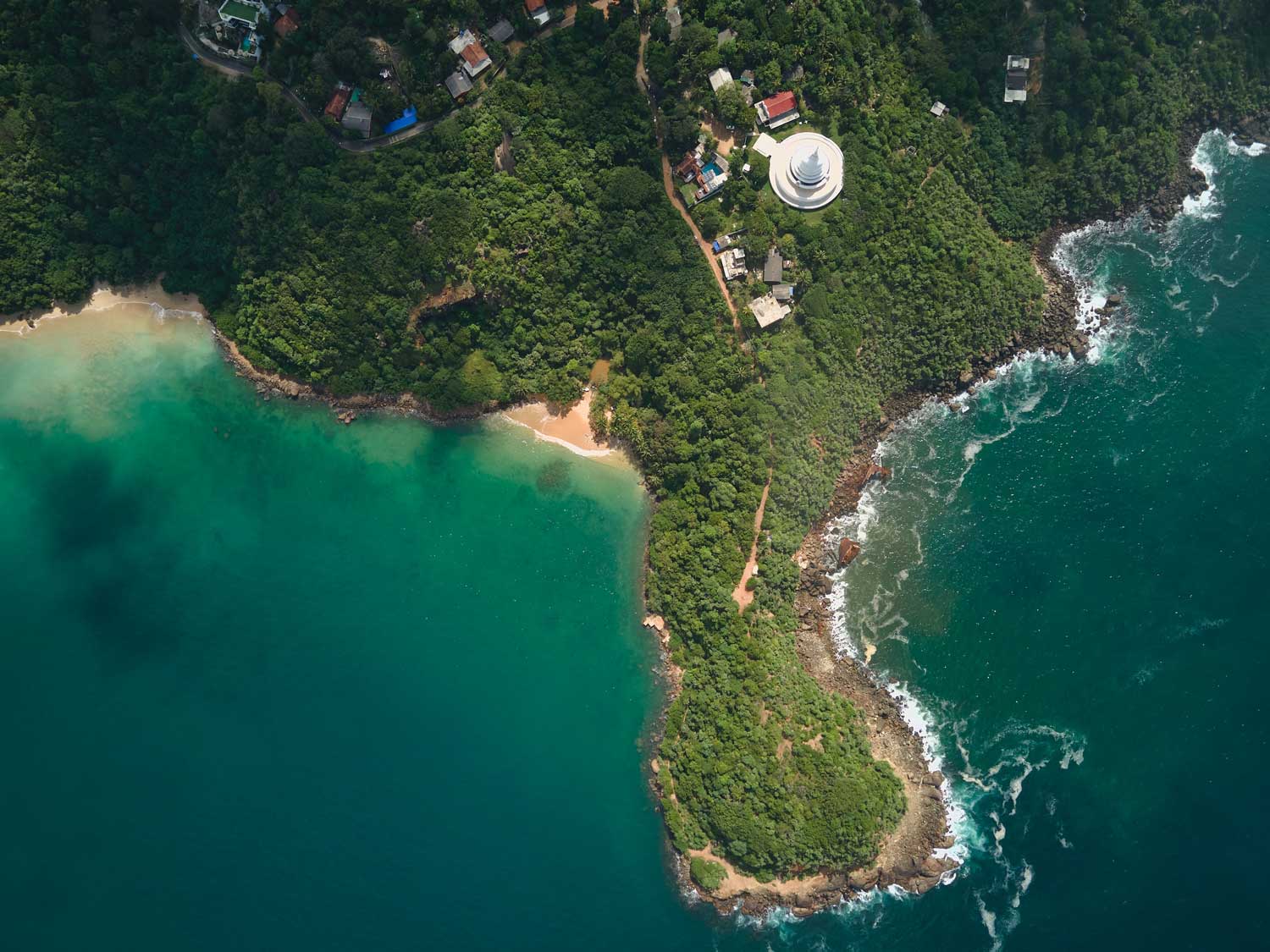
Photo by Meshaun de Silva on Unsplash
Koggala Beach
Koggala Beach is one of the longest beaches in Sri Lanka. It is located 8 km from Galle City and 130 km from Katunayaka Airport and can be reached by Road, plane and sea.
The ancient practice of stilt fishing on the coastlines can also be seen in Koggala. It is also a nesting area for marine turtles who visit the island during the breeding season, although the opportunity to actually see the laying process is very rare.
The best time to visit Koggala, based on the weather pattern, is from July to August and December to March
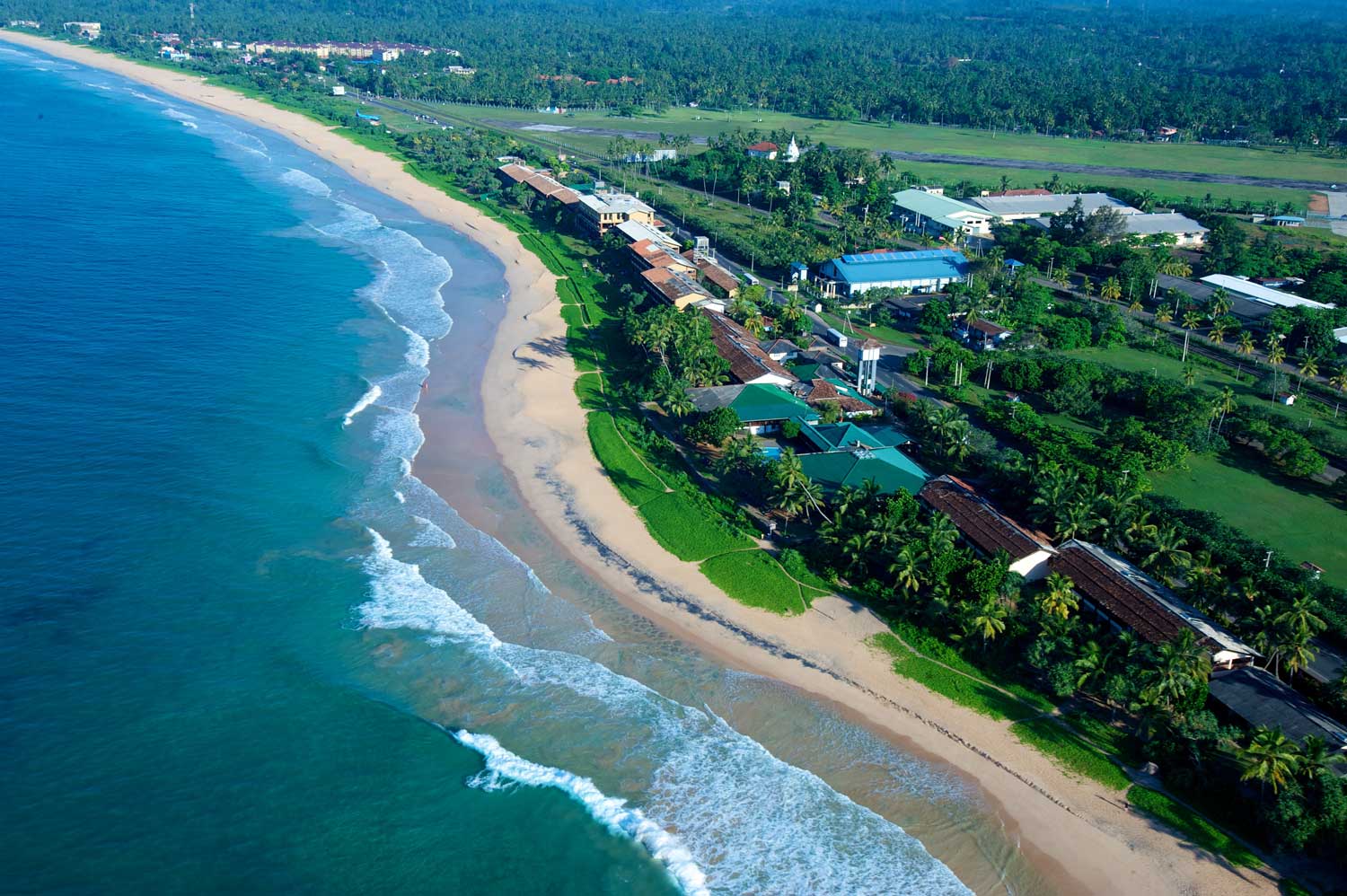
Weligama Bay
Rated by Forbes magazine as amongst Asia’s Best Beaches, Weligama is located on the Sri lanka’s south coast and is a picturesque bay where local fishermen have adopted an almost unique way of fishing – on stilts.
The stilt fishermen of Sri Lanka are famous for their sitting posture on a long pole with a crossbar that is stuck in the seabed close to the shore. They wade or swim out to these poles at times when the sea and fish are running in the right direction to earn their livelihood.
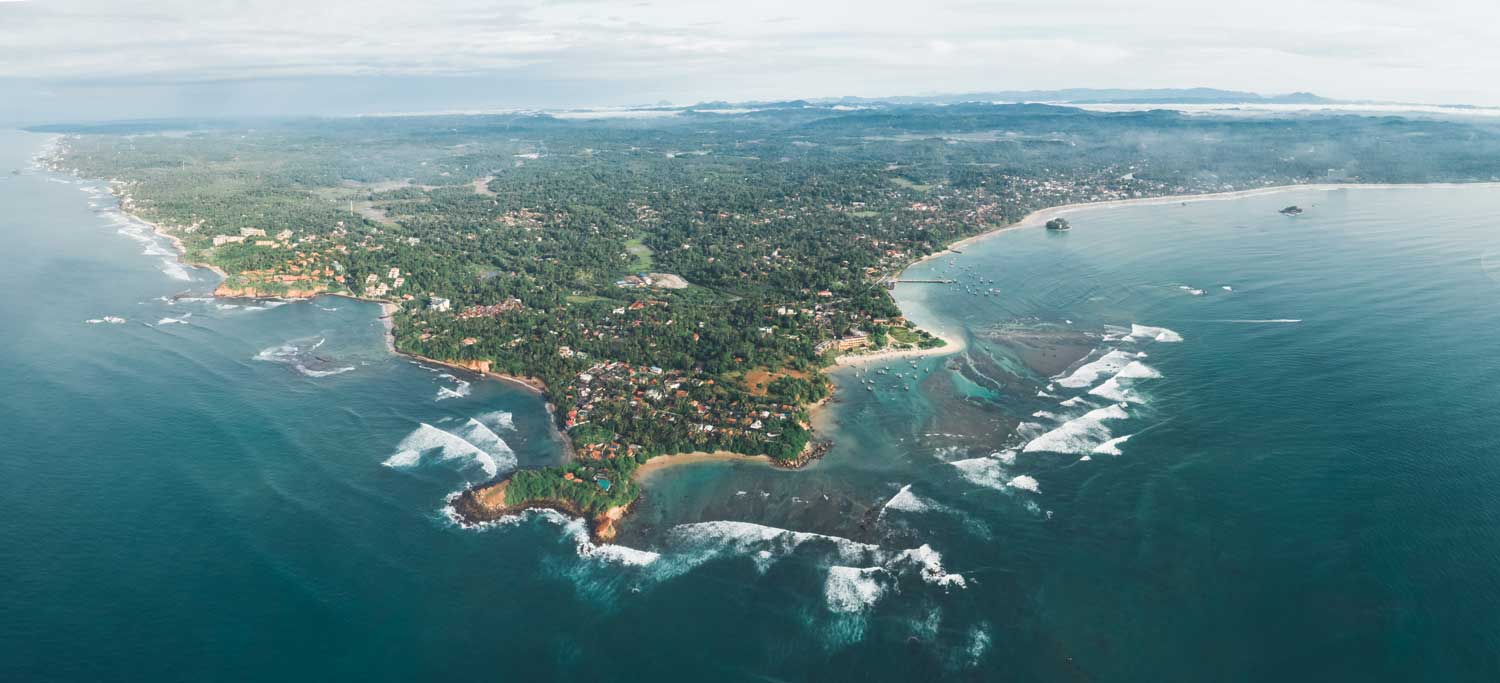
Whale Watching in Mirissa
Situated at the southern coast of Sri Lanka Mirissa in itself is a quiet and peaceful coastal town boasting unspoiled beaches. Beyond Mirissa coast lies the Indian Ocean and its vast majesty where the whales, the gentle giants of the ocean and the dolphins parade their presence in the deep seas of Mirissa.
These amazing marine mammals migrate through these vast and fertile stretches from December to April during the annual breeding season. Blue whales, Bryde´s whales, Sperm whales, Fin whales, bottle nose dolphins, common dolphins and spinner dolphins grace the waters of Southern Seas of Sri Lanka from Weligama to Mirrissa and can be found within just eight to ten nautical miles from the Mirissa harbour. The movement of whales in the Southern Costs of Sri Lanka had been under scientific scrutiny for the last decade and was well documented by The Voyage of Odyssey, the second research vessel to do research on marine life off Sri Lanka’s southern coast in 2003. The research crew member marveled at the abundance of whales in Southern seas of Sri Lanka.
Dolphin and Whale watching season commences in November and goes on till April in the down south region. The vessel leaves Mirissa fisheries harbour at around 6.30 am for a total trip duration of 3 to 4 hours, depending on the weather and the sea condition. Almost all the boats are registered with the Ministry of Ports and Aviation and are inclusive of a roof, sufficient seats and toilet facilities. They are equipped with life raft, life jacket, life rings and communication equipment and are only allowed to set sail if their Passengers are adequately insured for their trip and have given their consent to be aboard.
Upon setting off from Mirissa there is a 90% opportunity to come across Sperm whales and a very good chance of sighting the Blue whale as well. There are believed to be around 26 different species of whales traversing this region, including the well-loved dolphin.
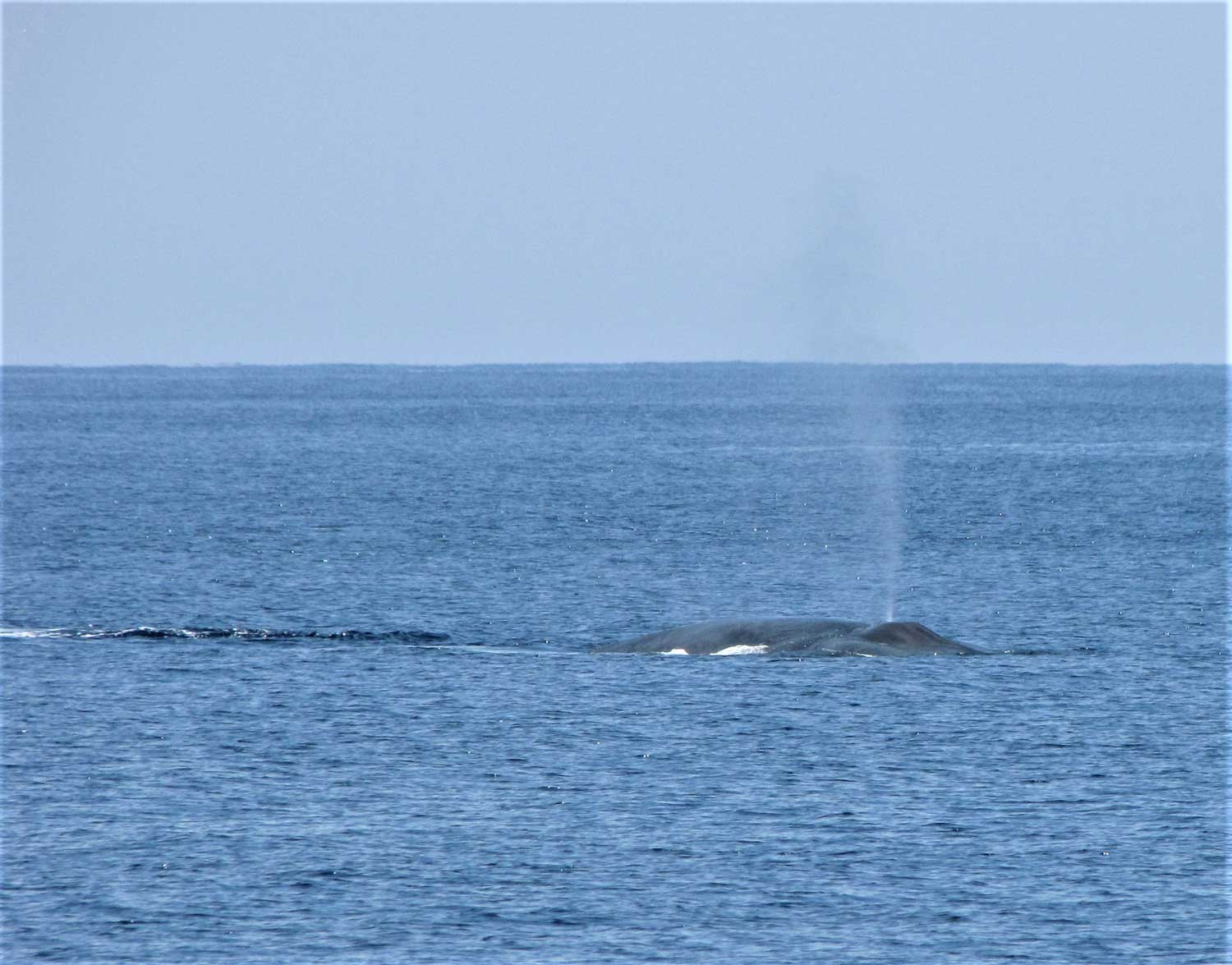
Unawatuna
About 5 kilometers from the Galle city is Unawatuna, a suburb of Galle, is situated at an elevation of 5 meters above sea level. Unawatuna is rich in its biodiversity with shrub jungles where Eco treks take place. It is also home to over sixty species of endemic birds mostly sighted in the remaining marshy area. Beneath the Indian Ocean lies a number of coral reefs, shipwrecks that attract divers and a great variety of fish and turtles. The turtles still wade onto the shore to lay their nests and eggs, and at times, as if to lay first claim to the sandy shore now invaded by the tourists and dotted by restaurants, even go right into their beach front.
According to the Ramayana legend the Rumassala Mountain is a piece of Himalaya in India. In the epic, the monkey-warrior Hanuman was sent back to India to fetch the four medicinal herbs from the Himalayas in order to heal prince Lakshman. Hanuman failed to identify these herbs, so he lifted the entire mountain and carried it to the battlefield to try to save Lakshman, but in the process, a chunk of it “fell-down” in the location of the present day Unawatuna, the name of the village derives from “Una-watuna” meaning “fell down”.
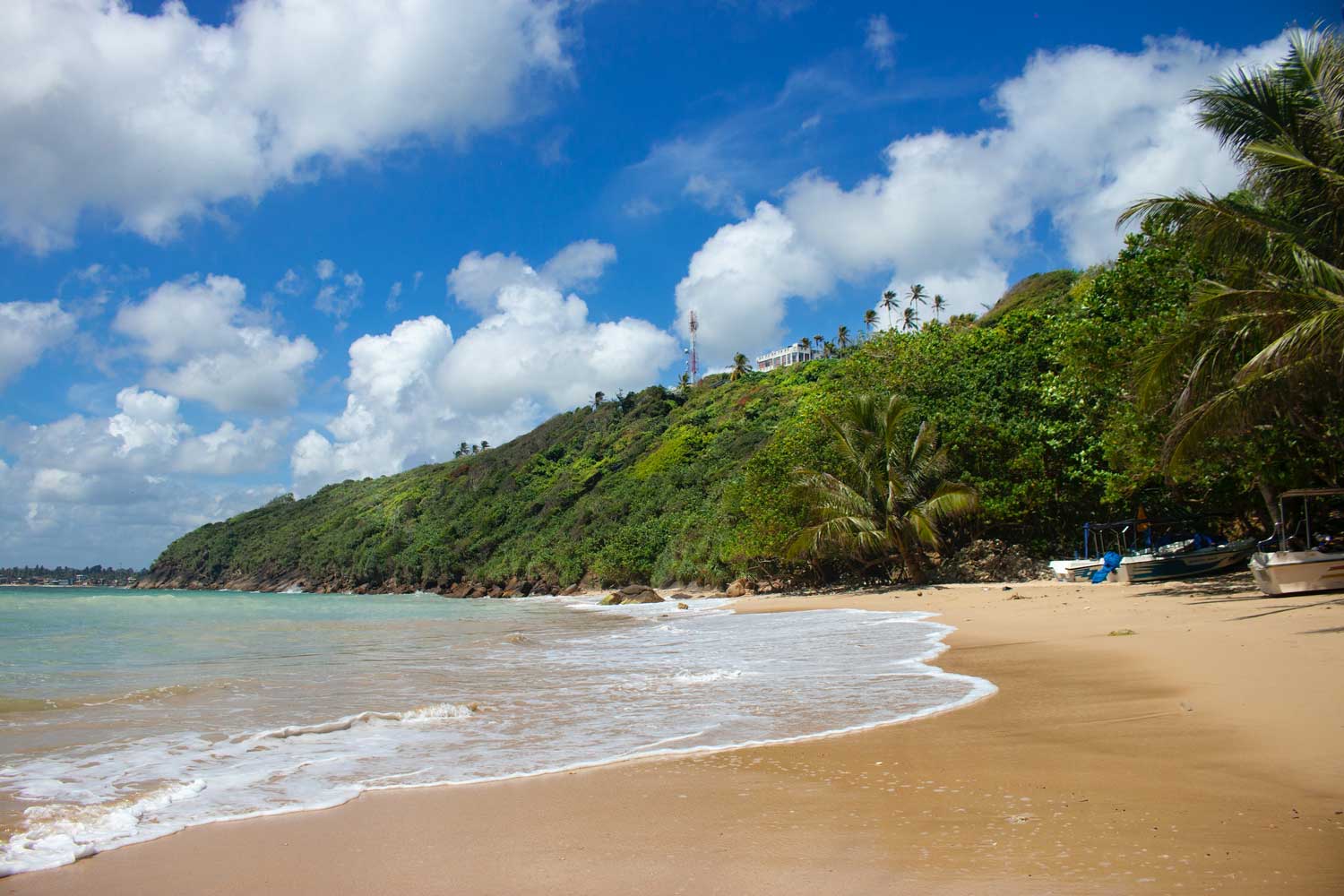
Photo by Chathura Anuradha Subasinghe on Unsplash
Sea Turtle Hatchery
Owing to its tropical location, Sri Lanka is surrounded by waters vibrant with a variety of marine life. One of the most endangered species of turtles rank among the most prominent creatures on this list. All five sea turtle species such as the Green, Olive Ridley, Loggerhead, Leatherback and Hawksbill turtles can be found in the waters surrounding the island. And all of these turtles occasionally drop by the shores to lay their eggs.
As most of these eggs don’t hatch and the ones that do don’t always make it to the ocean. Numerous conservation projects have been devised by the government of Sri Lanka to protect and conserve these feeble creatures where the eggs are collected, incubated and hatchlings are released to the ocean safely to increase their survival rate.
Mahamodara Sea Turtle Hatchery is one such conservation centre and is located a few minutes from Galle and encourages voluteers to participate in the efforts of collecting turtle eggs and caring for these invaluable endangered creatures.
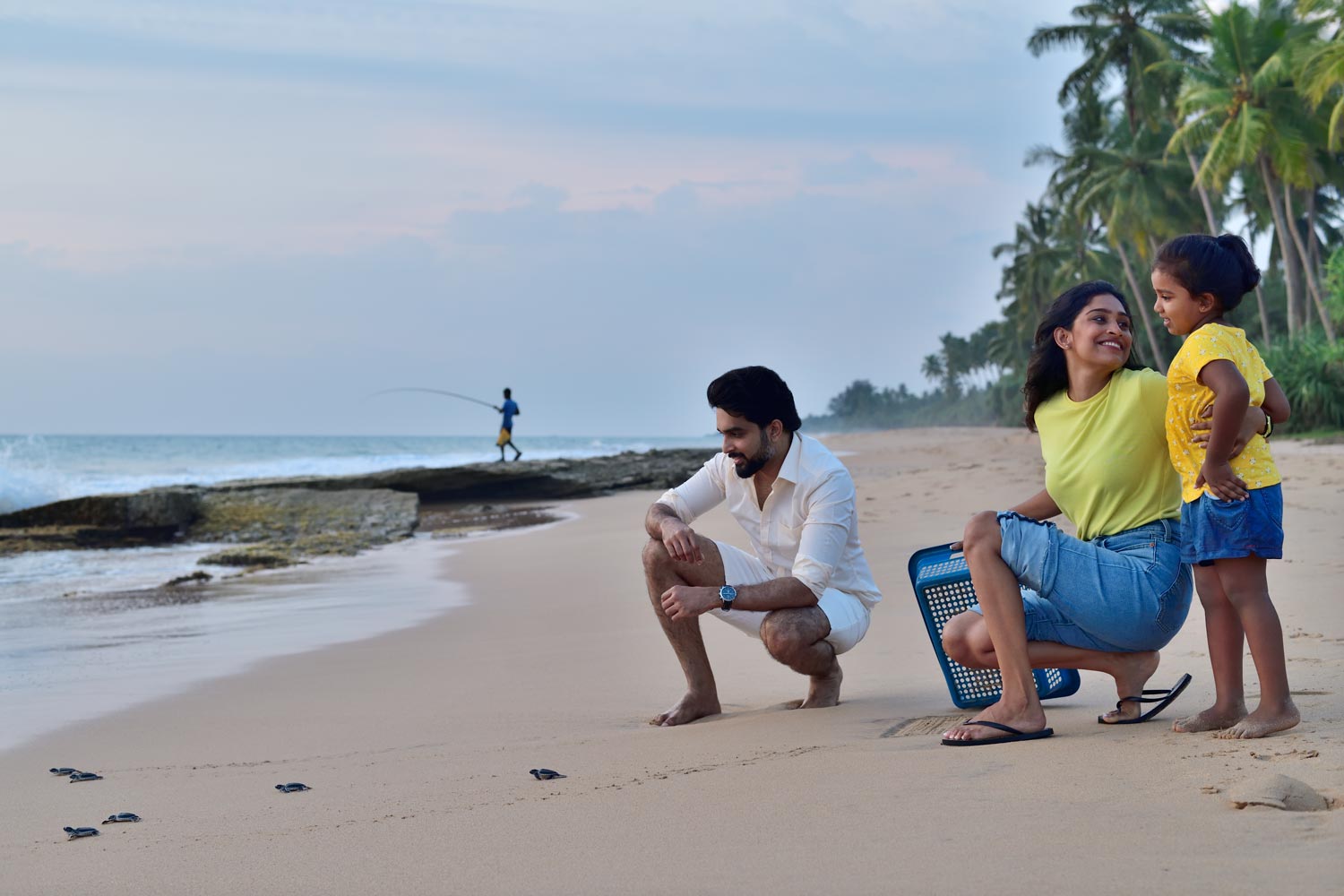
Snorkeling in Polhena
Located just 10 kilometers from the Mirissa Beach, the Polhena Beach is best known for being the best place to see turtles in their natural habitat and has some of the best snorkeling in Mirissa area as they’re found just off the shore. It is best not to get too close or touch the turtles but ensure they remain in their natural habitat in peace.
Best visited between December and March when the southern province is driest making it perfect for spending some quality time on the beach to indulge in some snorkeling with the Turtles
Coconut Tree Hill
Located adjacent to the Indian Ocean, the Coconut Tree Hill is a very popular tourist destination in Mirissa with a beautiful cliff covered in swaying coconut trees and overlooking the coast and the glistening waters of the Indian ocean. Found after a 1o minute trek through a privately owned coconut plantation, it is one of the most instagrammed locations in Sri Lanka and is recommended as an idea place to observe a glorious view of the sunset.
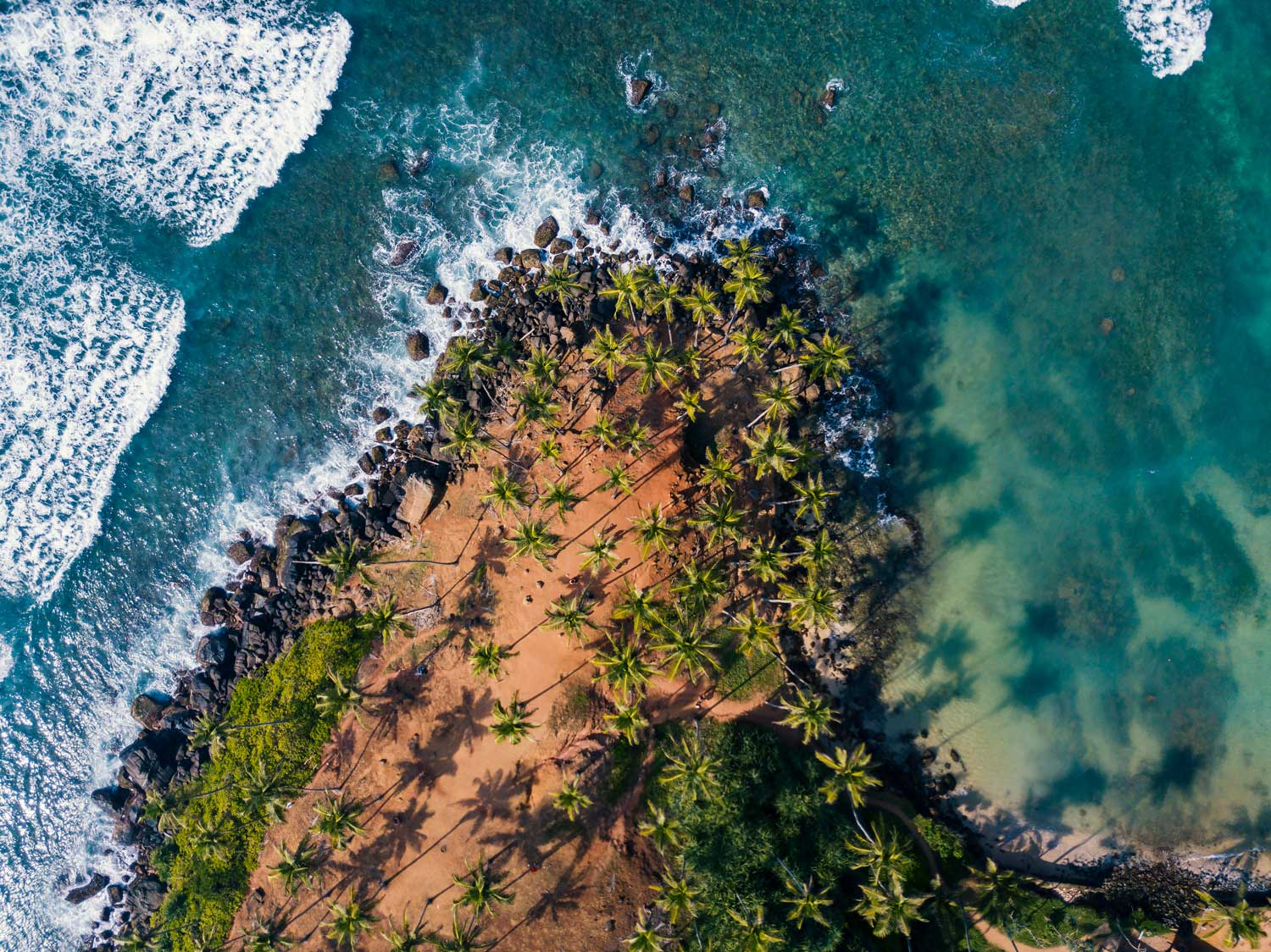
The Palm Tree Rope Swing
Another social media hotspot is the Palm Tree Rope swing at Dalawella Beach near Unawatuna. It is undoubtably a great place to have a chilled out or fun afternoon and enjoy the sunset.
